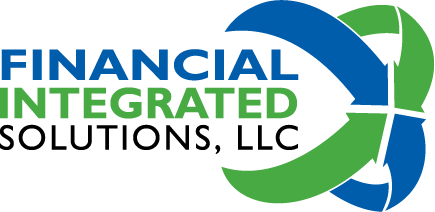
The Fed Finally Cut Interest Rates. What Could It Mean for Your Finances?
On September 18, 2024, the Federal Reserve’s Federal Open Market Committee (FOMC) lowered the benchmark federal funds rate one-half percentage point to a range of 4.75% to 5.0%. It was the first rate cut since the Fed raised the funds rate aggressively from March 2022 to July 2023 to help control inflation.1

The long-awaited policy shift suggests that a soft landing — the rare feat of bringing down inflation without causing a recession — is in sight. It also marks a critical juncture for the economy, with significant implications for consumers, businesses, and investors.
Why now?
The Federal Reserve operates under a dual mandate to foster maximum employment and stable prices for the benefit of the American public. For a couple of years rising prices have been considered the more serious threat, but the inflation rate has moved much closer to the Fed’s 2.0% target.
Officials now see these two risks as “roughly in balance.” In his post-meeting press conference, Fed Chair Jerome Powell said, “The labor market has cooled from its formerly overheated state, inflation has eased substantially from a peak of 7% to an estimated 2.2%, as of August.”2
In recent months, job gains have slowed considerably, and unemployment climbed from 3.8% in March to 4.2% in August. Powell maintained that employment data remains at solid levels, but recent changes suggest the downside risks have increased.3–4
“The U.S. economy is in a good place. And our decision today is designed to keep it there.”
— Fed Chair Jerome Powell
Relief for borrowers
Lowering the federal funds rate helps to reduce borrowing costs across the board, creating breathing room in the budgets of many households and businesses.
The prime rate, which commercial banks charge their best customers, typically moves with the federal funds rate. Though actual rates can vary widely, small-business loans, adjustable-rate mortgages, home equity lines of credit, auto loans, credit cards, and other forms of consumer credit are often linked to the prime rate, so the rates on these types of loans should adjust lower relatively soon after a Fed rate cut.
Borrowers with home equity lines of credit, adjustable-rate mortgages, credit card balances, or other outstanding loans with variable interest rates should see their monthly payments fall as well, in many cases within a couple of billing cycles.
Mortgage rates are influenced by a mix of complex factors that includes Fed policies, longer-term inflation expectations, and government bond market dynamics. The rates for 30-year fixed mortgages, which tend to track the yield on the 10-year Treasury note, fell steeply in August after government reports confirmed that inflation and the job market were cooling.5
The average rate on a 30-year fixed-rate mortgage was 6.09% on September 19, the lowest in 19 months. This is down from a recent peak of 7.22% in early May. Aspiring home buyers have gained significant purchasing power since last spring and mortgage rates may continue to fall gradually, but it’s also possible that much of the anticipated decline in interest rates has already been priced in.6
Too much cash on hand?
Savers have enjoyed being rewarded for holding cash in high-yield savings accounts and short-term certificates of deposits (CDs). Although it may not happen overnight, they should be prepared for the yields on these accounts to follow the Fed funds rate downward.
Investors who have more cash savings than they expect to need in the next couple of years might consider locking into today’s relatively high yields by shifting money into CDs or bonds with fixed interest rates and longer terms. For example, someone could purchase bonds that mature when the money is likely to be needed for retirement expenses or to pay for a child’s college education.
Moving more money into stocks, which have historically generated higher average returns over time, is a riskier option that may be appropriate for investors who intend to hang on to them for the long haul, but only if they can endure frequent price swings.
Rate cuts in a strong economy
Past rate-cutting cycles have aimed to boost growth when the economy was in trouble, which doesn’t appear to be the case this time around. Powell stated clearly, “The U.S. economy is in a good place. And our decision today is designed to keep it there.”7
In the second quarter of 2024, U.S. gross domestic product (GDP) expanded at a healthy 3.0% annual rate, and recent forecasts based on the Atlanta Fed’s GDPNow model indicate that the economy grew at a similar pace in the third quarter.8–9
The September rate cut — which officials hope will keep job market conditions from worsening — is presumably a starting point. The Fed plans to keep cutting interest rates until they reach a neutral stance that should no longer impact the economy for better or worse. According to current FOMC projections, the fed funds rate could drop an additional 0.50% by the end of 2024, and another 1.0% over 2025.10
It can take time for borrowing rates to respond to changes in the fed funds rate and noticeably impact the decisions of consumers and businesses. This “lag” in the effects of monetary policy is one reason that some people fear the economy is not out of the woods.
Whatever happens next, the Committee intends to make policy decisions “meeting by meeting based on the incoming data, the evolving outlook, and balance of risks.”11
The FDIC insures CDs and bank savings accounts, which generally provide a fixed rate of return, up to $250,000 per depositor, per insured institution. The return and principal value of an investment in bonds or stocks fluctuate with changes in market conditions and, when sold, these securities may be worth more or less than their original cost. Investments seeking to achieve higher yields also involve a higher degree of risk. Forecasts are based on current conditions, subject to change, and may not come to pass.


